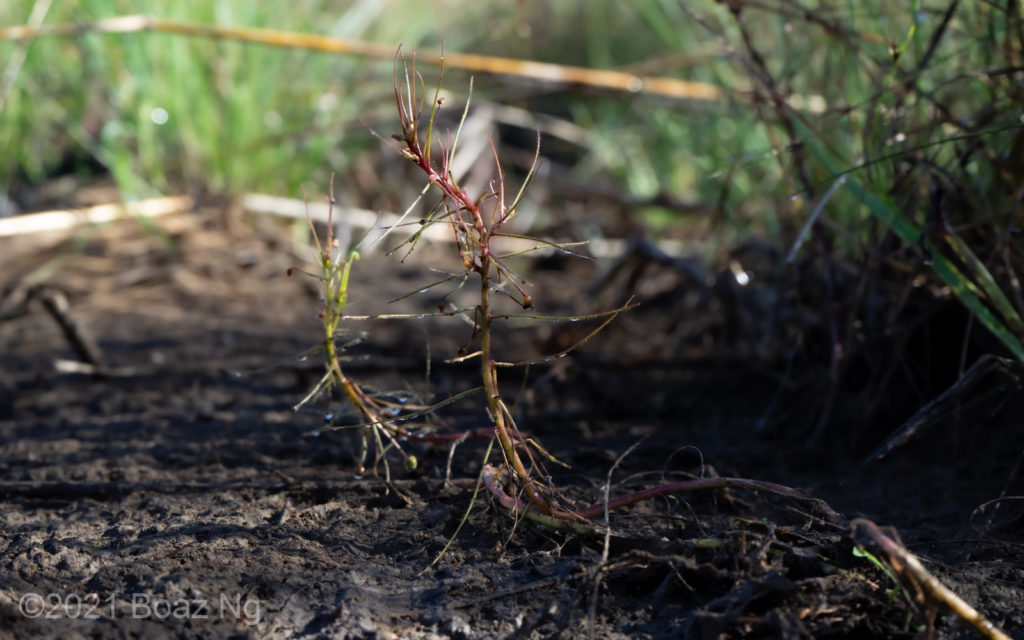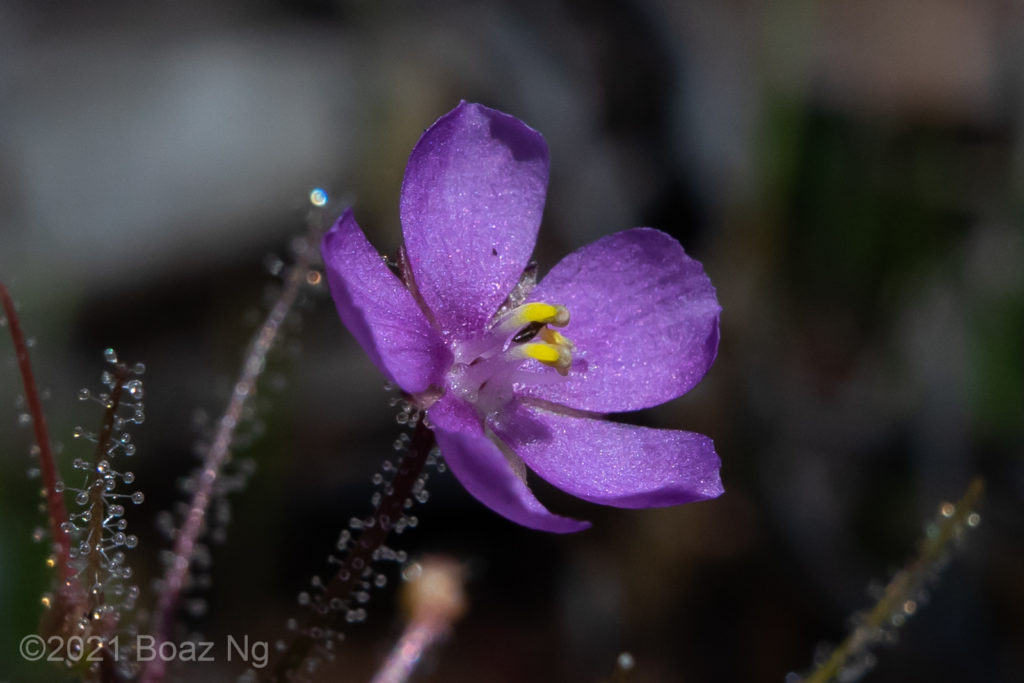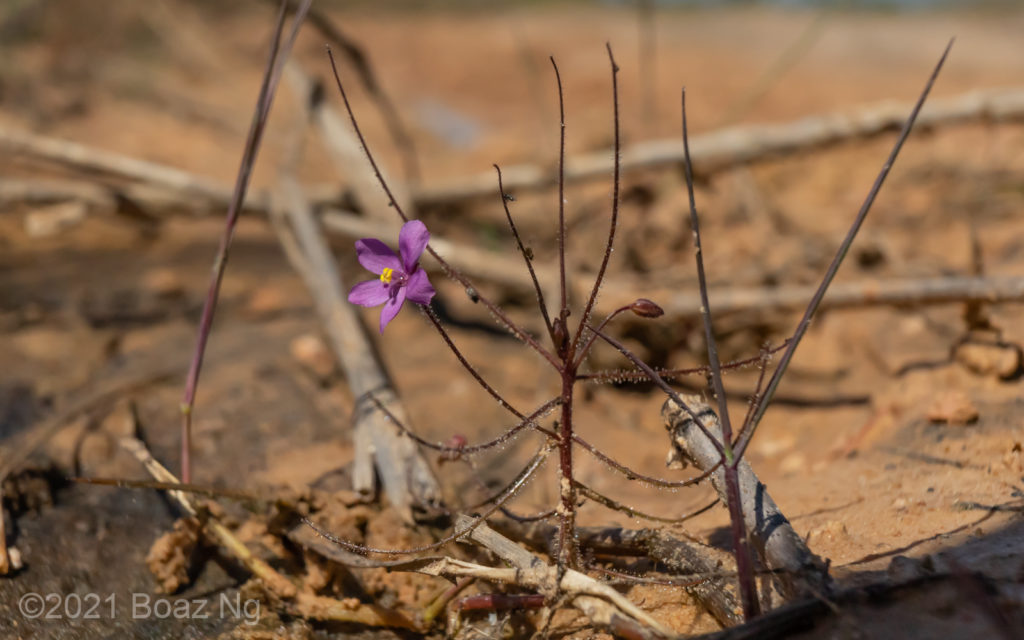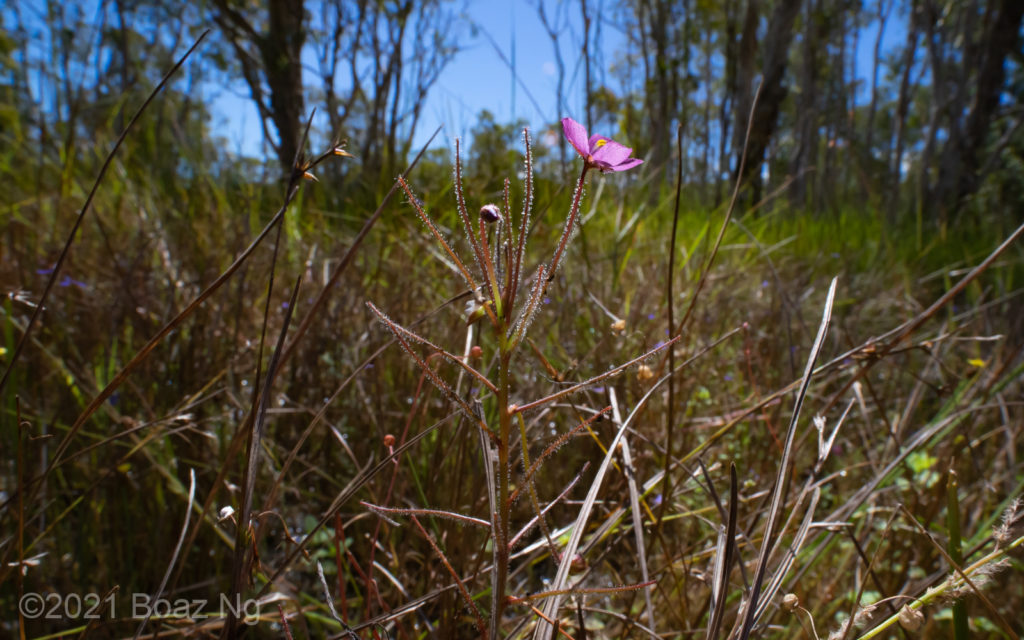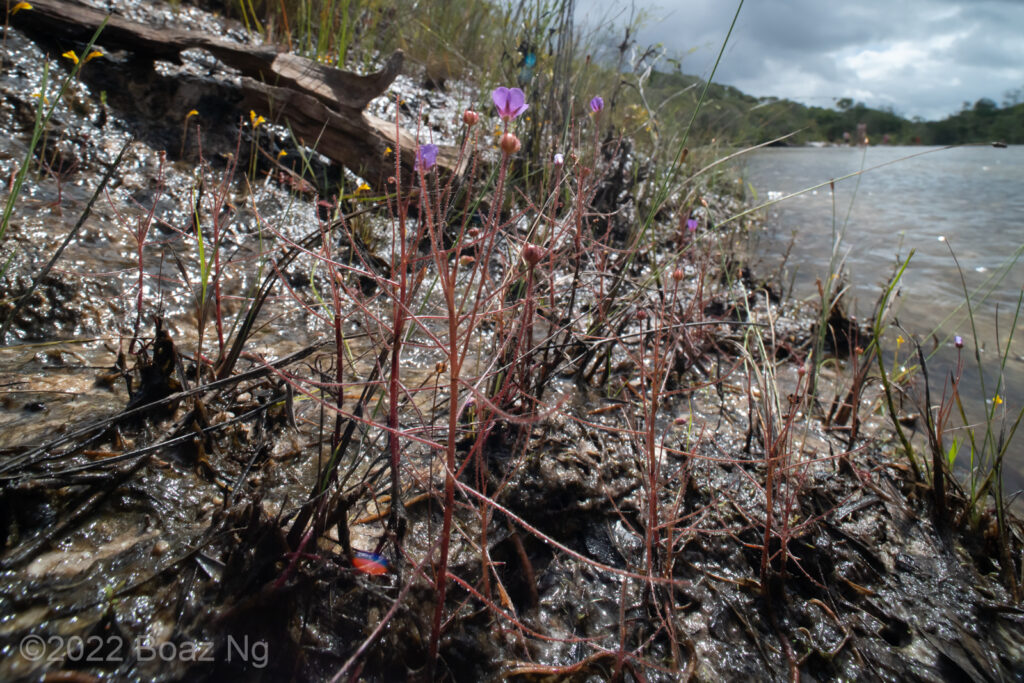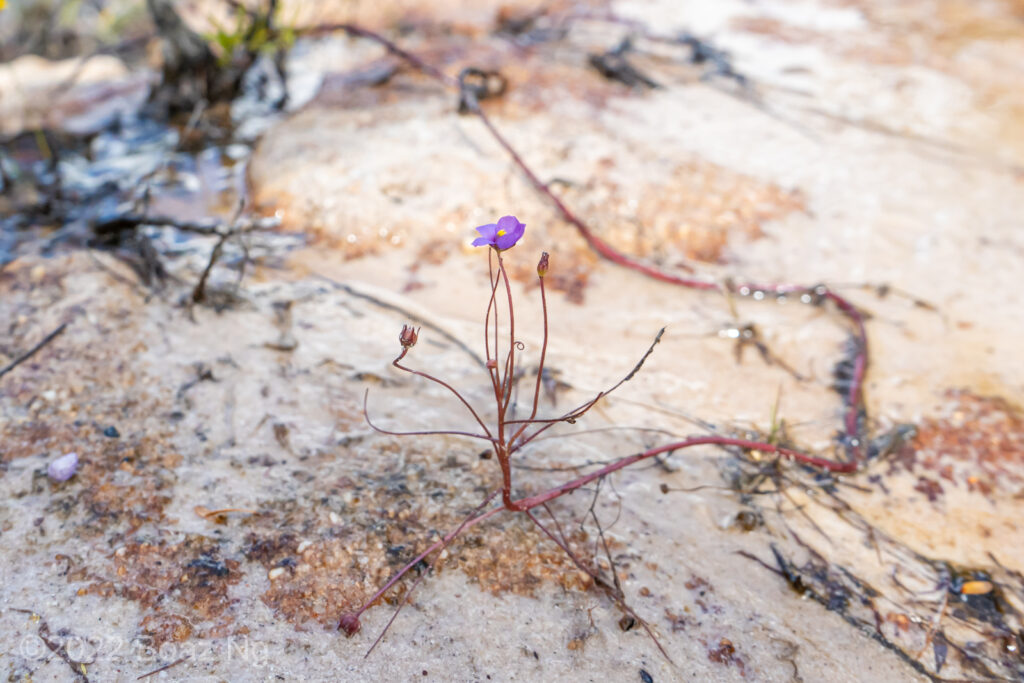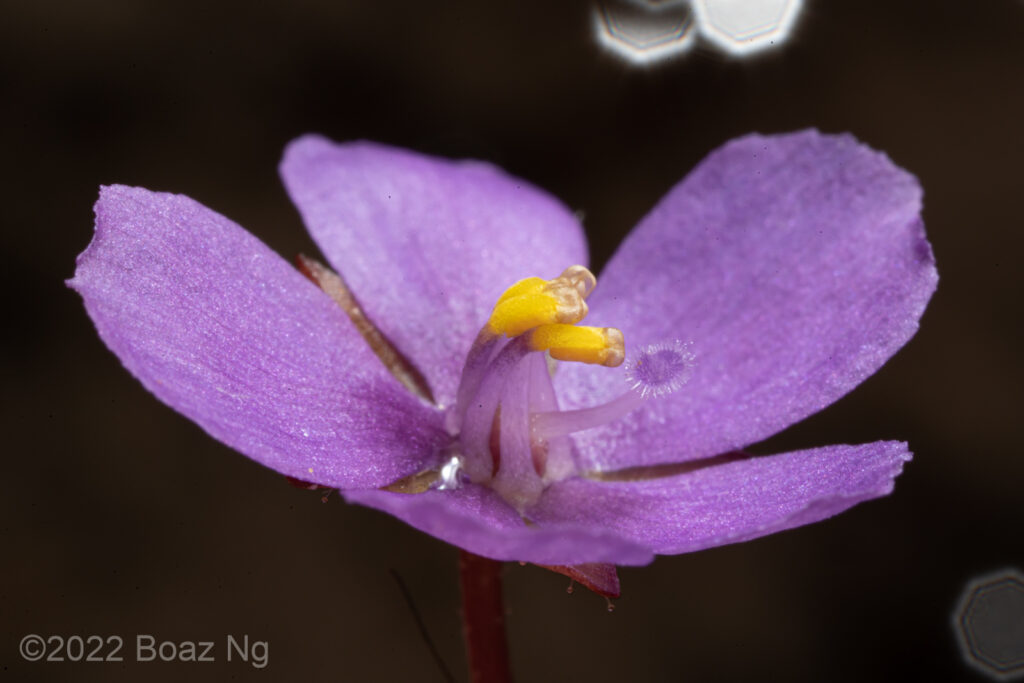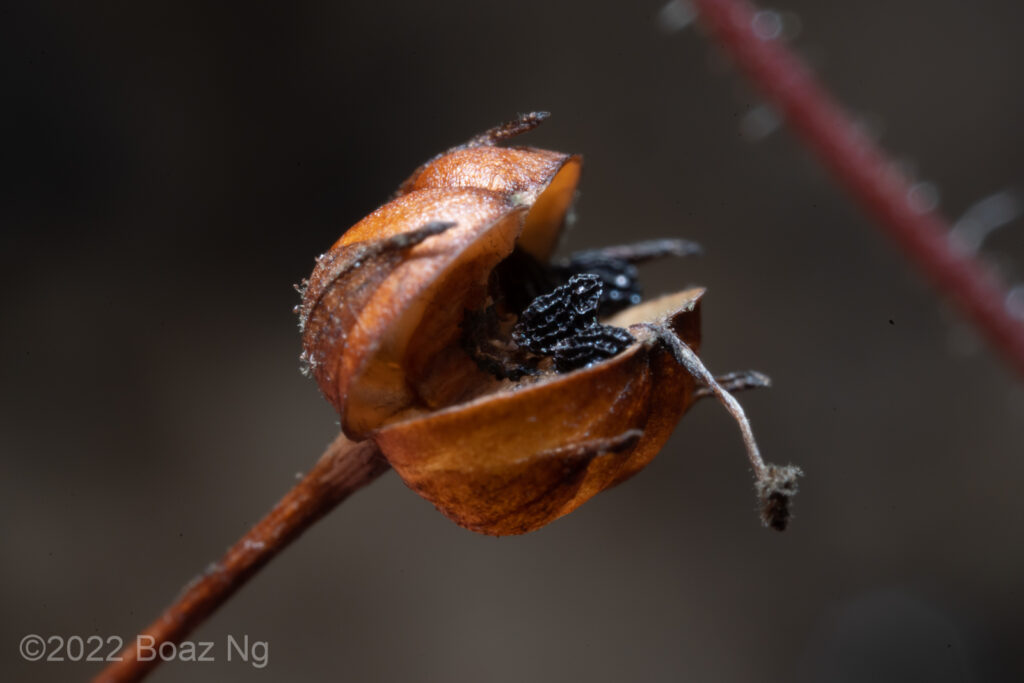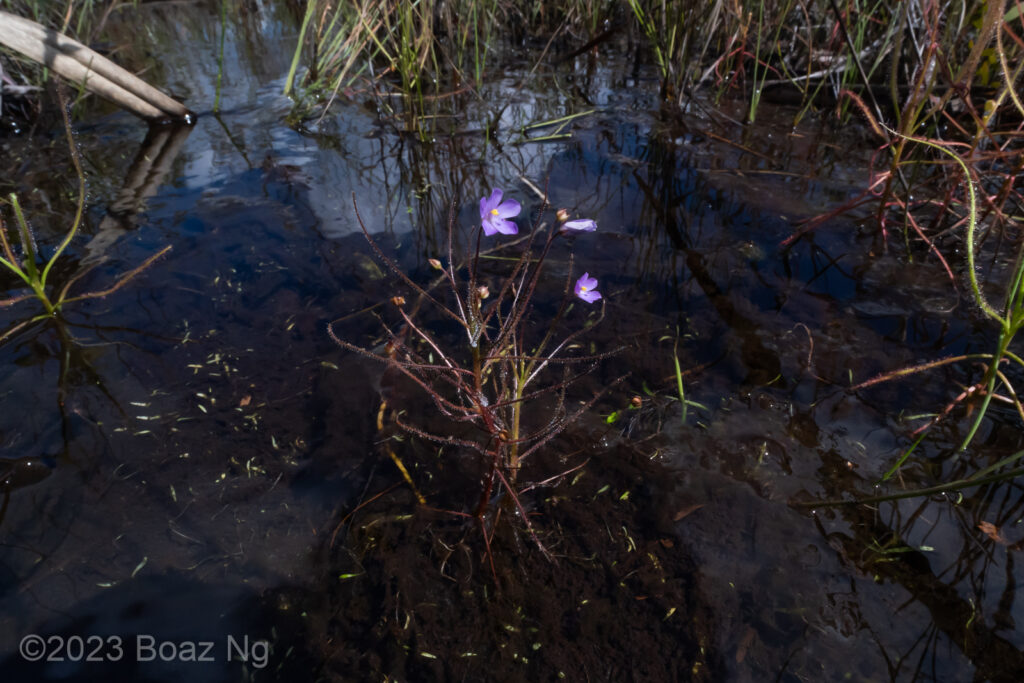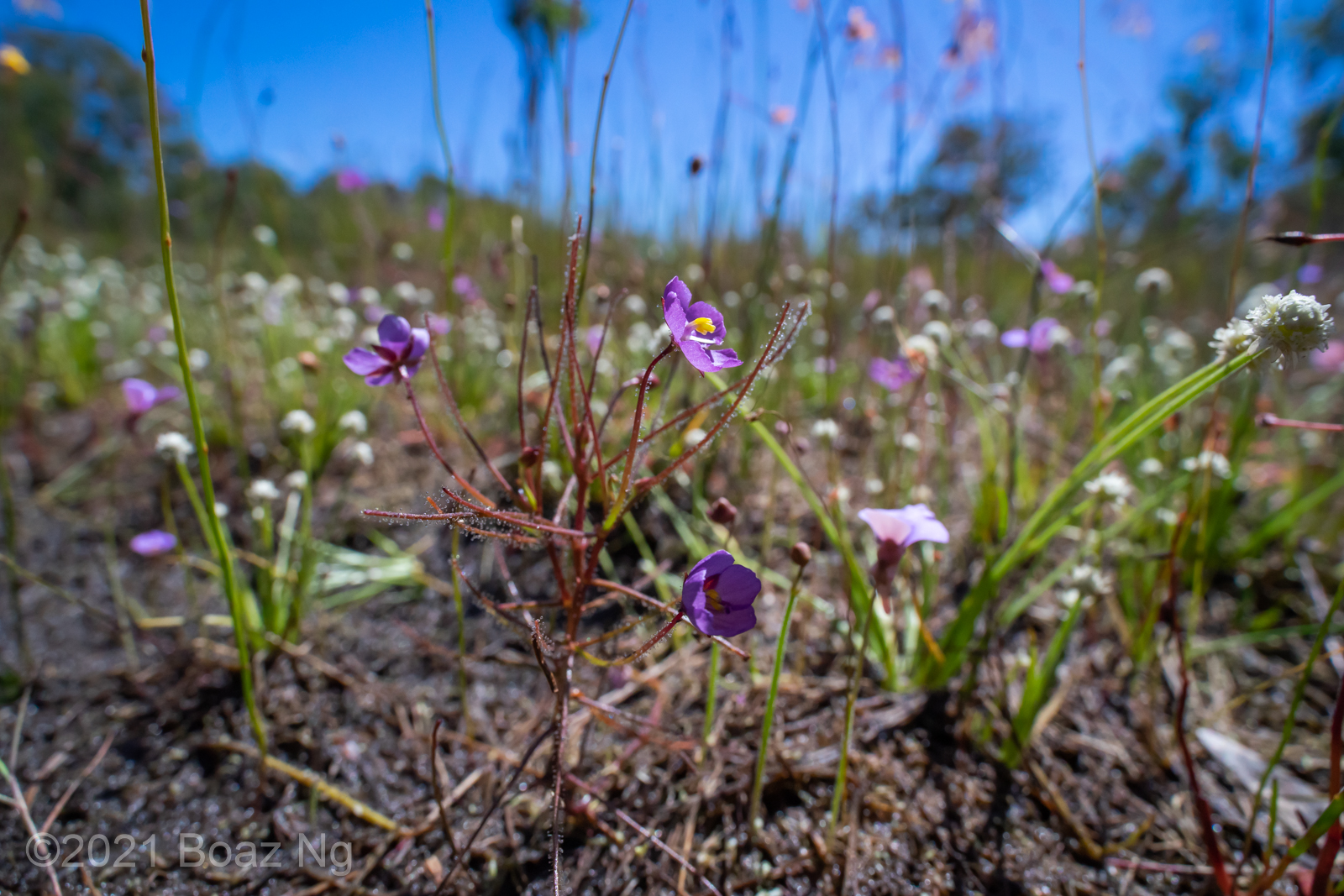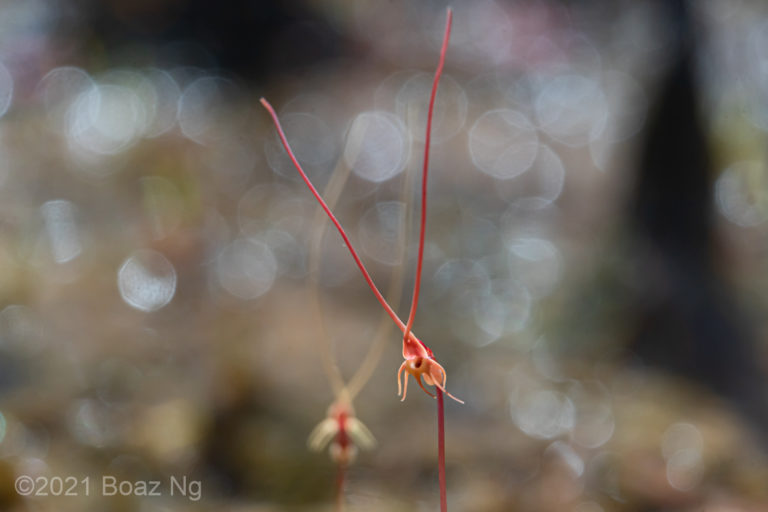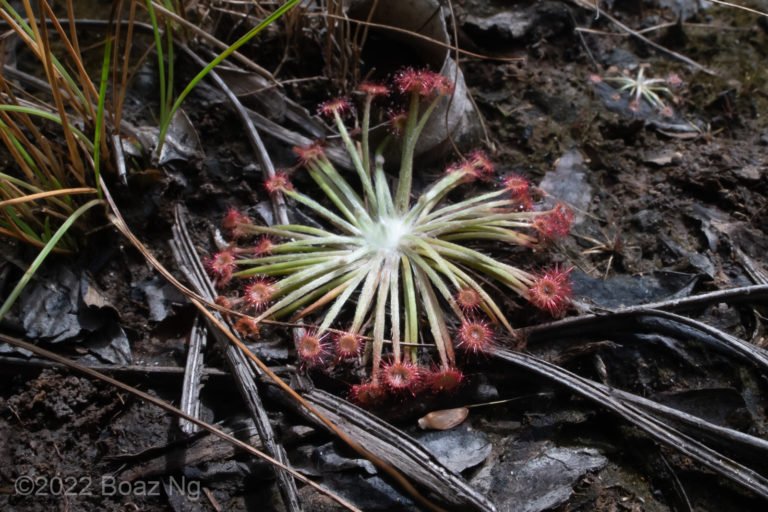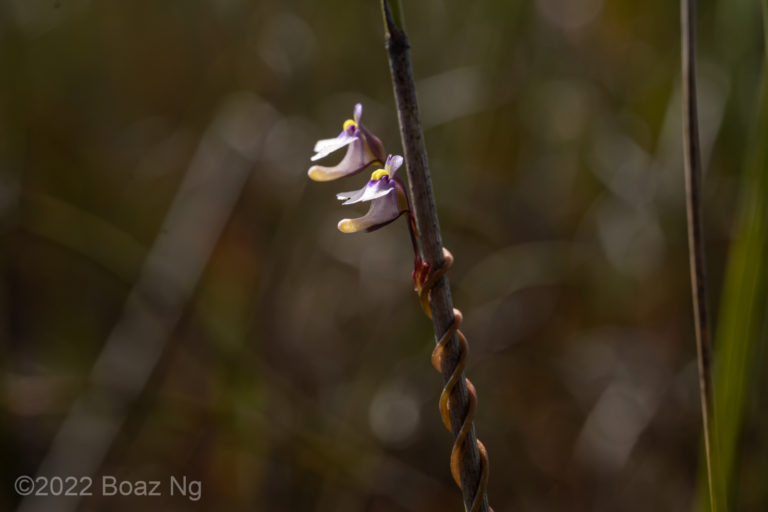Byblis aquatica is a species native to monsoonal northern Australia. The species is named for its preference for waterlogged niches.
The species is small in size, with an active rosette roughly 5-10 cm in diameter. The species usually produces a long, trailing stem of old growth which is commonly 10-30 cm long but can reach over 60cm in exceptional circumstances During the wet season floods, this buoyant stem sprawls atop the water and elevates the growing point. The flowers are vivid pinkish purple with serrated edges and the anthers (yellow pollen bearing organs) are shorter than the filaments that attach them to the body of the flower. The foliage usually blushes red in good light.
B. aquatica is found in shallowly flooded ephemeral wetlands, often amongst grasses. During the wet monsoon season, these habitats are inundated by a few centimeters of water. The species blooms after the rains receed and the soils are exposed to air. At most locations, the species grows as a strict annual in nature, with the total dessication of its environment during the dry season. Perennial populations may exist in creekside seepages in Far North Queensland which are persistently wet during the dry season, although annual closure of the access roads prohibits observation for a few months of the year.
B. aquatica and B. liniflora can be distinguished from other species by its anthers, which are shorter than the filaments. B. aquatica can be distinguished from B. liniflora by its short glands (B. liniflora has stalked glands), long trailing stem (B. liniflora remains bushy), reddish blush (B. liniflora is bright green) and preference for seasonally inundated niches (B. liniflora grows in drier more elevated niches).
